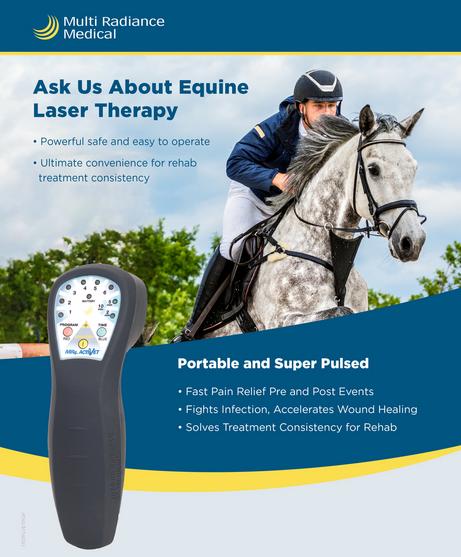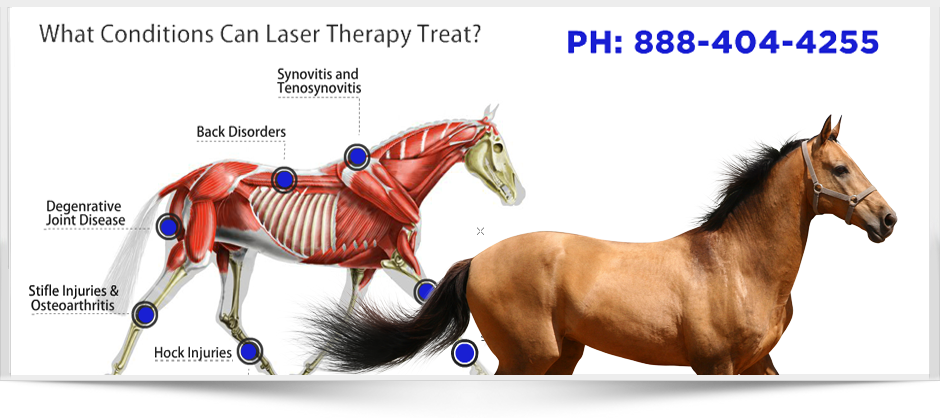Equine Therapy for Injury Healing: Exactly How Equines Help Heal Emotional Wounds
Equine Therapy for Injury Healing: Exactly How Equines Help Heal Emotional Wounds
Blog Article
How Laser Therapy in Horse Treatment Is Changing Vet Look After Equines
Laser treatment has actually arised as a transformative strategy in equine vet treatment, providing a non-invasive service that accelerates recovery and boosts total health. The portability and flexibility of laser treatment gadgets better emphasize their expanding indispensability among vets.

Comprehending Laser Therapy
Understanding laser treatment is essential for valuing its function in equine therapy. Laser treatment, likewise known as photobiomodulation, involves the application of specific wavelengths of light to cells, which can lead to various organic impacts. This therapeutic method takes advantage of the power of light energy to penetrate the skin and underlying cells, promoting cellular procedures and enhancing cells repair service.
The innovation behind laser therapy is based in the principle of photochemistry, where photons are soaked up by chromophores within cells, causing enhanced ATP manufacturing and modulation of reactive oxygen types. This, consequently, promotes mobile spreading, reduces swelling, and speeds up healing. Vet practitioners make use of different kinds of lasers, consisting of low-level lasers (LLLT) and high-power Class IV lasers, depending on the specific therapeutic purposes and the nature of the equine problem being dealt with.
Various laser wavelengths and power setups are meticulously selected to target numerous cells midsts and achieve wanted scientific outcomes. Safety methods are vital, as improper use can bring about thermal damage or suboptimal restorative effects. Thus, a thorough understanding of laser therapy's systems and applications is crucial for its efficient execution in equine veterinary technique.
Advantages for Horse Health And Wellness
The myriad advantages of laser therapy for equine health incorporate boosted healing, discomfort reduction, and boosted flexibility. This sophisticated treatment technique leverages particular wavelengths of light to pass through cells, promoting cellular function and advertising rapid cells repair service. The non-invasive nature of laser therapy guarantees marginal anxiety and pain for the horse, facilitating a smoother healing process.

Better flexibility is one more important benefit, specifically for efficiency and functioning horses. By reducing swelling and pain, and boosting tissue repair, laser treatment assists in recovering joint function and muscle versatility. The cumulative result of these benefits is not just a quicker return to normal task but additionally an overall improvement in the horse's top quality of life. Therefore, laser therapy stands as a transformative device in modern equine vet care.
Typical Conditions Dealt With
Laser treatment has actually arised as a versatile treatment choice for a selection of common equine conditions. Furthermore, laser treatment is efficient for problems like osteo arthritis, where it aids mitigate joint inflammation and Click This Link promote tissue repair service.
Wound monitoring is an additional location where laser treatment has actually shown significant guarantee. Chronic wounds or slow-healing ulcers can be particularly difficult in equines, yet laser treatment boosts mobile regrowth and enhances blood flow, therefore speeding up the healing procedure. Furthermore, laser therapies have actually been efficiently used in taking care of unguis problems such as laminitis and abscesses, minimizing pain and promoting faster healing.
Equine athletes often experience performance-related concerns like muscle mass soreness and stress fractures. Laser therapy help in minimizing muscle mass fatigue and quickens the healing of micro-injuries, therefore making sure that equines return to come to a head performance faster. By attending to these diverse problems, laser therapy is transforming the landscape of vet care, giving a non-invasive, efficient alternative to typical treatments.
Innovation Behind Laser Treatment

Laser devices utilized in vet medication often use low-level laser treatment (LLLT) or cold laser therapy. Unlike high-powered medical lasers, these tools operate at lower energy levels, enhancing healing benefits while reducing thermal damages. The power from the laser light boosts adenosine triphosphate (ATP) manufacturing, enhances cellular metabolic process, and accelerates cells repair procedures.
Modern laser therapy equipment for equine treatment is designed with flexible settings to satisfy the particular requirements of various cells and problems. Equine Therapy. Criteria such as wavelength, power thickness, and therapy period can be carefully tuned, using customized healing remedies. In addition, advancements in laser technology have led to the development of mobile, portable tools, making it less complicated for vets to provide therapy in a selection of settings, from clinics to stables. This technical technology is a keystone in the changing of equine vet treatment.
Success Stories and Study
Showcasing the tangible advantages of laser therapy, numerous success stories and study illuminate its transformative influence on equine health and wellness. One such case entails a pureblood racehorse suffering from persistent tendonitis. Conventional therapies generated minimal renovation, but after incorporating laser therapy right into the program, the horse displayed significant decreases in swelling and discomfort within weeks, ultimately returning to affordable racing.
One more engaging example features a dressage equine detected with extreme back pain, limiting its efficiency. A vet group employed low-level laser therapy (LLLT) to target the irritated locations, causing marked enhancement in adaptability look at this site and a notable decrease in discomfort. Over a number of sessions, the horse restored its peak type, showcasing the efficiency of laser treatment in addressing musculoskeletal issues.
Furthermore, a research study carried out at a leading equine facility checked out 50 steeds with numerous soft cells injuries treated with laser treatment. The outcomes stood out: 85% of the steeds showed increased recovery times and enhanced flexibility. These cases emphasize the flexibility and efficiency of laser treatment in equine medication, offering a non-invasive, scientifically-backed technique to enhancing recovery and efficiency in steeds.
Final Thought
Laser treatment is revolutionizing equine veterinary care by supplying a non-invasive therapy that accelerates recovery, minimizes swelling, and eases discomfort. With its efficiency in treating a series of problems, from bone and joint injuries to persistent ailments like osteoarthritis, this modern technology dramatically boosts equine health and wellness and movement. The portability and flexibility of laser treatment even more underscore its transformative effect on vet practices, strengthening its function as a necessary tool in modern-day equine health care.
Report this page